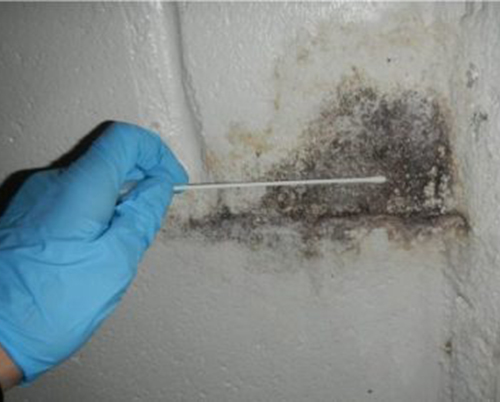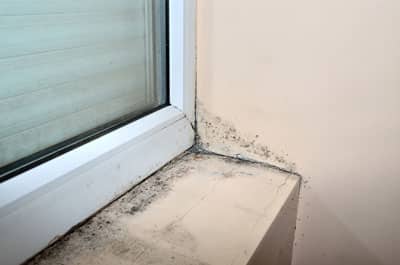Ensuring Post Remediation Verification Accuracy
Ensuring Post Remediation Verification Accuracy
Blog Article
Your Ultimate Overview to Article Mold And Mildew Remediation Strategies
In the after-effects of mold invasion, understanding how to efficiently get rid of the mold and avoid its reoccurrence is critical for preserving a healthy and balanced indoor environment. From picking the right cleaning and decontaminating methods to carrying out methods for lasting mold and mildew prevention, each step in the removal trip plays an important duty in ensuring a successful end result.
Understanding Post-Mold Remediation Process
After completing the mold and mildew remediation process, it is critical to recognize the post-mold remediation strategies that are essential to make sure a effective and detailed cleanup. As soon as the mold has actually been eliminated, the following step includes cleansing and disinfecting the affected locations to stop any type of regrowth of mold. This includes utilizing specialized cleaning agents to wipe down surface areas and kill any remaining mold spores. It is important to dry the location entirely to discourage the growth of mold and mildew in the future (Post Mold Remediation). Proper air flow and dehumidification can assist in this process.
In addition, performing a last assessment post-remediation is essential to guarantee that all mold has actually been effectively eliminated. This inspection must entail a thorough visual check as well as perhaps air tasting to validate the lack of mold and mildew spores airborne. If the inspection discloses any type of sticking around mold, additional remediation might be necessary. Lastly, educating owners on safety nets such as regulating dampness degrees and immediately resolving any type of water leaks can aid preserve a mold-free setting.
Effective Cleansing and Sanitizing Techniques

Avoiding Future Mold Development

Significance of Proper Ventilation
Appropriate air flow plays a critical function in protecting against dampness buildup, a crucial element in mold and mildew growth within interior atmospheres. Effective air flow systems assist eliminate excess moisture from the air, reducing the chances of mold and mildew spores discovering the moisture they require to spread out and sprout. Without sufficient ventilation, indoor rooms can become a breeding place for mold, bring about potential wellness risks and architectural damage.
By ensuring proper air circulation, air flow systems can additionally aid in drying moist locations much more swiftly after water damages or flooding cases, additionally preventing mold and mildew development. Post Mold Remediation. In spaces like bathrooms, basements, cooking areas, and attics where wetness degrees often tend to be greater, setting up and preserving reliable ventilation systems is critical in avoiding mold problems

Monitoring and Maintenance Tips
Offered the vital function that proper air flow plays in preventing mold and mildew development, it is important to establish efficient monitoring and maintenance tips to ensure the continued capability of air flow systems. Regular inspections of air flow systems must be carried out to look for any signs of obstructions, leaks, or breakdowns that can hinder appropriate air movement. Surveillance moisture levels within the home is likewise crucial, as high moisture can add to mold and mildew growth. Mounting a hygrometer can help track moisture levels and alert homeowners to any kind of spikes that may require focus. Furthermore, making sure that air filters are regularly cleaned up or replaced is essential for keeping the performance of the air flow system. Implementing a routine for regular maintenance tasks, such as air duct cleansing and cooling and heating system examinations, can aid stop concerns prior to they escalate. By staying conscientious and aggressive to the problem of ventilation systems, residential or commercial property proprietors can properly minimize the threat of mold and mildew regrowth and preserve a healthy and balanced interior environment.
Verdict
Finally, post-mold removal techniques are crucial for making certain a risk-free and clean atmosphere. Recognizing the procedure, carrying out effective cleaning and sanitizing approaches, preventing i thought about this future mold and mildew growth, preserving proper ventilation, and routine surveillance are all essential action in the remediation process. By adhering to these guidelines, you can effectively eliminate mold and mildew and stop its return, promoting a healthy living or functioning room for all passengers.
In the aftermath of mold infestation, recognizing exactly how to effectively eradicate the mold and mildew and avoid its reoccurrence is critical for maintaining a healthy interior environment. Once the mold has actually been eliminated, the following action involves cleansing and decontaminating the affected locations to stop any type of regrowth of mold - what to do after mold remediation. After eliminating visible mold and mildew development, it is crucial to clean up all surface areas in the affected area to eliminate any type of continuing to be mold and mildew spores. To even more enhance mold prevention measures, it is vital to address underlying problems that originally led to mold growth.Given the critical duty that proper air flow plays in avoiding mold and mildew development, it is essential to develop efficient surveillance and upkeep ideas to make sure the ongoing functionality of air flow systems
Report this page